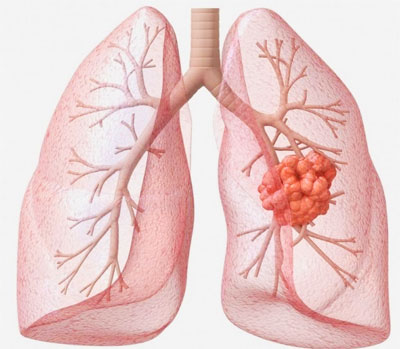Cervical Cancer: New Light on Effective Treatment
This year, about half a million women will be diagnosed with cervical cancer, making this the second most common female cancer worldwide. This cancer arises in the cervix, the lower part of the uterus (womb). Unfortunately, most women with cervical cancer are free of symptoms until the disease has evolved into an advanced stage of cancer.
Cervical cancer is preceded by abnormal changes in the cells of the cervix, a condition known as cervical dysplasia. When a biopsy reveals dysplasia, it is also known as cervical intraepithelial neoplasia, or CIN. Though cervical dysplasia can develop at any age, it is most often seen in women ages 25 to 35.
Screening programs aimed at preventing cervical cancer indicate that the prevalence of CIN has increased in the past few decades, particularly among younger women. Almost all cases of CIN and cervical cancer are caused by the human papilloma virus, which is spread through sexual contact.
Once cervical cancer becomes advanced, women may experience bleeding after sex, after menopause, or at odd points during the menstrual cycle. Catching the disease early, before it has a chance to develop into an aggressive cancer, is considered to be the best way to keep the cancer at bay.
A number of treatment strategies have been used for eliminating CIN, such as cryotherapy and various laser techniques. These strategies tend to be painful during treatment and may result in bleeding after the procedure. Pain-killing medication is typically needed, and recurrences are not uncommon.
The main drawback of these conventional methods is the destruction of the normal cervical tissues around the affected area (stroma). This may cause scarring and malfunctioning of the cervix. Such effects, in turn, can result in premature delivery, increased need for a caesarean, and, in many cases, infertility. The elevated risk of infertility is a major reason that women in their thirties and forties are interested in alternative treatment methods.
Shedding Light on a Safer Fertility-Sparing Approach
Photodynamic therapy, or PDT, has been used as an alternative therapy in order to help meet the needs of a growing number of younger women who wish to maintain their fertility after a diagnosis of cervical cancer. Other women in this situation are deemed to be at high risk of cervical insufficiency (in the event of surgery) and therefore prefer not to undergo the operation.
One of the main advantages of PDT is that the patient experiences no pain during the procedure, thus eliminating the need for anesthesia. Secondly, no bleeding occurs during or after PDT. And finally, PDT leaves the cervix intact and preserves fertility. No adverse effects of PDT on pregnancy or childbirth have been observed.
A number of clinical studies have indicated that PDT results in favorable response rates for patients with either CIN or cervical cancer. In a randomized placebo-controlled clinical trial at Hannover Medical School in Germany, 70 patients were randomly assigned to one of three groups: (1) PDT with hexaminolevulinate (HAL) as the photosensitizer; (2) placebo, or (3) follow-up observation with no treatment. After six months, the CIN lesions had cleared in 57% of patients in the HAL-PDT group, compared to only 25% in the combined control group, as reported in the August 2014 issue of Lasers in Surgery and Medicine.
In this same study, however, one in every three patients in the PDT group reported adverse side effects, mostly mild pain and cramping. It is possible that a different photosensitizer could have made the difference. Recent laboratory studies of Bremachlorin®, for example, have suggested strong eradication of abnormal cells associated with dysplasia. This photosensitizer is known to have superior tolerability compared to other photoactive agents used in PDT.
A Stronger Attack on Cancer
Laboratory studies at the Third Military Medical University in Chongqing, Sichuan (China), recently assessed different photosensitizing agents in PDT. These scientists concluded that the photodynamic treatment strategies have strong potential as an alternative treatment modality for cervical cancer. A number of new photosensitizers are being tested to this end, as reported online ahead-of-print in the 7 November 2014 issue of Oncology Reports.
Other research has explored the possibility of combining PDT with cisplatin chemotherapy, a common treatment for advanced cervical cancer. Cisplatin is a potent chemotherapeutic drug with severe adverse effects. Scientists have been interested in the possibility of combining this drug with other treatments in order to enhance the overall treatment effect while also possibly lowering the necessary dosage of cisplatin.
A study out of Estadual Paulista University (UNESP) in Sau Paulo Brazil, sought to assess the anticancer potential of PDT. The researchers tested different photosensitizing agents (methylene blue or Photogem) both individually and combined with cisplatin in cell culture studies.
They found that both photosensitizers, with the proper light dose, were effective in killing the cervical cancer cells. When compared to PDT treatment, cisplatin was actually less effective. By contrast, combining PDT with cisplatin had the strongest treatment effect, though the results also depended on the sequencing of the PDT and chemotherapy (with different sequencing depending on the photosensitizer).
These findings suggest that the combined PDT-chemo approach may lead to better outcomes for the treatment of cervical cancer, as reported online ahead-of-print in the 7 September 2014 Journal of Photochemistry and Photobiology B.
Sources
Li PX, Mu JH, Xiao HL, Li DH. Antitumor effect of photodynamic therapy with a novel targeted photosensitizer on cervical carcinoma. Oncol Rep. 2014 Nov 7. [Epub ahead of print]
de Freitas LM1, Soares CP2, Fontana CR3. Synergistic effect of photodynamic therapy and cisplatin: A novel approach for cervical cancer. J Photochem Photobiol B. 2014 Sep 7;140C:365-373. [Epub ahead of print]
Hillemanns P, Petry KU, Soergel P, Collinet P, Ardaens K, Gallwas J, Luyten A, Dannecker C. Efficacy and safety of hexaminolevulinate photodynamic therapy in patients with low-grade cervical intraepithelial neoplasia. Lasers Surg Med. 2014 Aug;46(6):456-61.
© Copyright 2014, Photoimmune Discoveries, BV





 English
English Français
Français Deutsch
Deutsch Nederlands
Nederlands